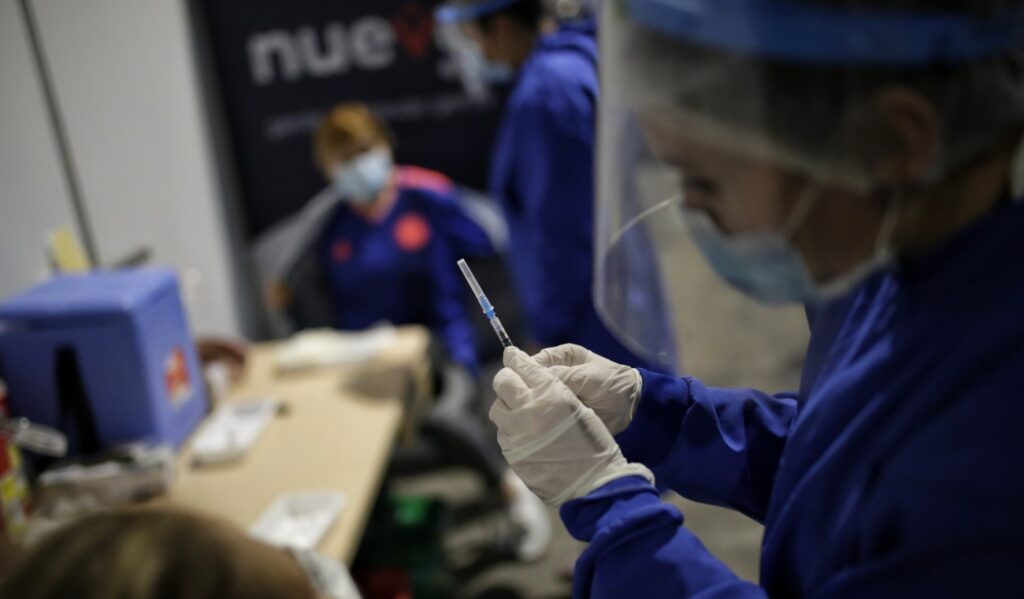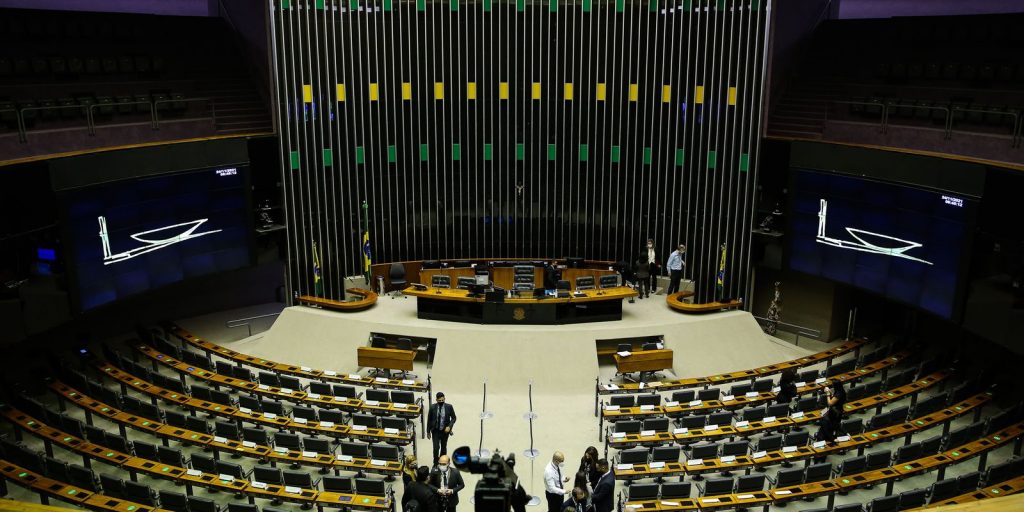On March 10, under the previous administration and one day before the change of government, the Undersecretary of Public Health signed 20 exempt resolutions on different decisions related to the inoculation of the population to face the COVID-19 pandemic. It was on March 23 when these documents became official when they appeared published in the Official diary, which in legal terms in our country is assumed to be a matter known by the entire population. The point is that the documents had been evacuated seven months earlier by the Institute of Public Health (ISP) to the Ministry of Health (Minsal), without the population having been informed in a timely manner.
But as is obvious, what is presumed known, is not. Within the documents –which were given legal processing only on the last business day of the Government of former President Piñera– there are several serious ESAVIS (Events Supposedly Attributable to Vaccination and Immunization), which is nothing more than public alerts, based on international experience and studies, and guidelines from global health surveillance agencies in relation to immunization. In two of these documents, there is talk of possible cases of heart conditions such as myocarditis and pericarditis, especially in the adolescent population, and other cases related to thrombosis, as a result of the inoculation of certain vaccines.
With almost 10.5 million cases in the last week in the world, COVID-19 continues to be a global concern, although immunization campaigns are advancing at a sustained pace in most countries. In this context, various centers in the world, such as the case of the US Center for Disease Control and Prevention. (CDC for its acronym in English), decided to activate an “active monitoring” on cases of myocarditis and pericarditis that were reported in people vaccinated with Pfizer-BioNTech and Moderna sera, For this reason, information campaigns were launched so that the population would take timely and official knowledge of the adverse effects that some people could present after vaccination.
Due to the sensitivity of the matter, the local health authorities also became aware of these anomalies through separate reports that the Institute of Public Health (ISP) sent to the Undersecretary of Health, in the form of ESAVIS, on various dates of the first and second half of last year. This is how on August 21, 2021, the ISP evacuated the document “Esavi Serious: Myocarditis and/or Pericarditis“. And then he reiterated it in another report on September 23 of the same year.
In numeral 9 of this document it is stated that “since April 2021, cases of myocarditis, pericarditis and myopericarditis have been reported worldwide, after immunization with vaccines that use the mRNA platform, such as the Pfizer laboratory vaccine. -BioNTech (Comirnaty) and the Moderna laboratory (Spikevax). As a result of the foregoing, the following point describes that “by virtue of the foregoing, it is necessary to describe the main characteristics of the clinical presentation and recommendations for the diagnosis and treatment of this condition, in accordance with the scientific evidence available to date .
see here “Esavi Serious: Myocarditis and/or Pericarditis”
The informative pharmacovigilance note of September 23 emphasizes an essential point: “Through this note, recommendations are given, both for health professionals and for the community so that these events can be recognized in a timely manner.
Despite the fact that this document required -given the importance of the matter- immediate processing so that the community in general became aware of possible heart conditions, detectable with attention to symptoms such as chest pain, shortness of breath and feelings of have a racing or palpitating heart, the health authority of the outgoing government only gave legal tender on March 10 of this year to this ESAVI, approving the document through the “Exempt Resolution Number 442, published in the official gazette on March 23, more than seven months after the authority became aware of the alert.
The same fate, had the Eserious savi: Thrombosis Syndrome with Thrombocytopenia” of mid-March 2021 and that issued as an update to September 13, 2021 from the Undersecretary of Public Health, Division of Disease Prevention and Control, Department of Immunizations. This document indicates that “since mid-March 2021 , cases of thrombosis associated with thrombocytopenia have been reported worldwide, after immunization with adenovirus vector vaccines, such as the vaccine from the AstraZeneca laboratory (Vaxzevria) and the Johnson & Johnson laboratory (Janssen).” And it resolves to approve the document called “serious ESAVI: Thrombosis Syndrome with Thrombocytopenia (TTS).” As the previous one, this ESAVI was given course on March 10 of this year through the “Exempt Resolution Number 437, of 2022.
see here eserious savi: Thrombosis Syndrome with Thrombocytopenia
Both documents had as precedent a previous report on Esavi Notified First Semester 2021that in its 9th point “What, from December 24, 2020 to June 30, 2021, the PNI has received a total of 7,208 notifications from Esavi, that is to say of people who presented some of the symptoms described in the later documents. For that reason, it is that the exempt resolution through which it is complied with, categorically warns that “By virtue of the foregoing, it is necessary to approve the document called “Inform of Esavi Notified First Semester 2021″, but despite being delivered on August 2, 2021, it was only approved on March 10, 2022.
see here Esavi Notified First Semester 2021
From the same other document also from March 2021, released through Exempt Resolution Number 392, from March of the following year, statistical data is provided on vaccination in people over 18 years of age, showing, for example, that “as of December 31 (2021), 13,900,002 doses of the Pfizer-BioNTech SARS-CoV-2 vaccine had been administered to people over 18 years of age . The total of notifications received in the SDFV associated with this vaccine were 5,894which corresponds to a notification rate of 42.40 reports per 100,000 administered doses of the SARS-CoV-2 Pfizer-BioNTech vaccine.

The non-serious events that presented the highest notification rate are those related to the injection site, followed by headache, fever, muscle pain, fatigue and joint pain. Regarding the most frequent manifestations of Serious ESAVIs, reported for the SARS-CoV-2 Pfizer-BioNTech vaccine, it is indicated:

See here statistical report number 8
lack of transparency
Although this information was made known to medical services in general, through publications on the ISP website, it was not openly disclosed to the population, as Dr. José Miguel Bernucci, national secretary of the Association, warns. Doctor.
“The healthiest and most recommended thing is that all these issues are open and known by the population, because, finally, these blankets of doubts that begin to be generated with this publication on the last day of government, when we do not have online reports of these secondary effects , when the experts cannot appear explaining exactly this, it effectively creates a greater threat to some type of benefit that can be generated on the vaccination programs. And the biggest threat or problem of this is because much of this information, not having a clear context, is used by anti-vaccine groups, ”he points out.
Among the most serious episodes is the reported case of the death of a young 28-year-old athlete, presumably due to inoculation, since family and friends indicate that her death occurred 35 hours after being vaccinated. Behind this complaint and subsequent complaint is Dr. Diana Pey, who states that “it is a lack of truthfulness and responsibility towards citizens, not actively reporting these ESAVI data. It is necessary that there be clear knowledge of the possible adverse effects, as they do in Japan, which published the lists of these problems on the walls and entrances of hospitals.
See here exempt resolutions:
ISP response
“This is an administrative act, which approves the document, but basically the documents that the National Immunization Program produced are approved by Resolution. The date or why they did it on the 10th I do not know, but that is the process. And we, regardless of that, were taking out the different reports from ESAVI, we have eight for adults and three for children, ”says Heriberto García, deputy director of the ISP, and according to health sources, a man very close to the former president.
According to García, the content of the Esavis “is socialized.” “The officiality that the resolution gives is simply to give weight to the document, but technically and regulatoryly it has no weight, it is simply an administrative resolution. But from a technical point of view, and communicationally, this has been reported,” says García.
The same vision is held by former minister Jaime Mañalich. “There are some aspects that have not been formally made official, this occurs in many portfolios in the last days of the government to make the transfers. In the particular case of ESAVI adverse effects, what it does is give an official character to that work, which was public, such as the communication of potential adverse effects of COVID vaccines. In that sense, it is not a very relevant issue, it does not entail administrative responsibility, and it is a fairly common custom, I think, that it is a matter of ordering these things in the last days to make the delivery or transfer of government well, ”he says.
Similar cases, different restrictions
It should be noted that only with respect to the AstraZeneca vaccine, in August of last year – and after the evacuation of the ESAVIs – the restriction of this was defined only for its use in women over 55 years of age and in men over 45. Sources of the laboratory indicate that beyond the fact that it was indicated that there were 179 cases linked to post-vaccination thrombosis, for transparency they managed to get the ministry itself to give the causality and it was established that only in three cases there was evidence that the inoculation caused these adverse effects.
Former authorities in the health area explain that, on this issue, a significant number of cases of adverse effects were generated worldwide, mainly in women who received AstraZeneca, and for this reason Chile, “without there being scientific evidence to support it, a decision was made beyond that (worldwide recommendation) and its use was prohibited and corrected”, according to former minister Mañalich.
But this, in addition, accounts for a differential treatment of the information, since in a similar situation this did not happen with Pfizer despite having two separate reports that accounted for the alerts. It should be remembered that after that episode the Government of Sebastián Piñera did not renew purchases with AstraZeneca, but it did renew purchases with Pfizer, which despite presenting cases of myocarditis or other registered cases, did renew commitments to acquire more of these vaccines.

















